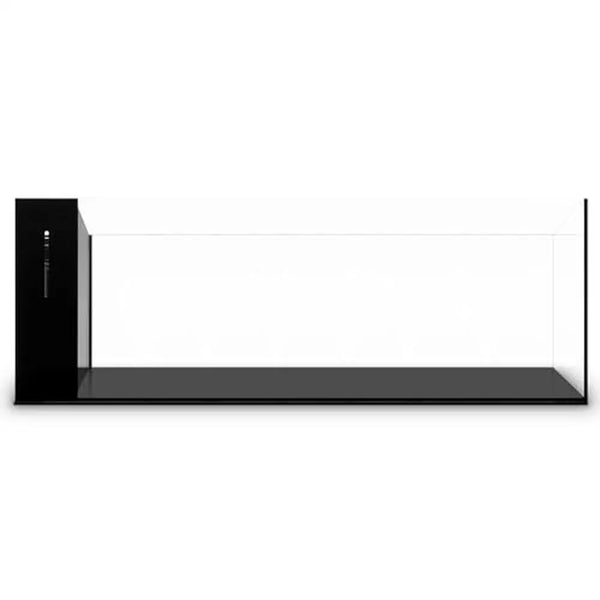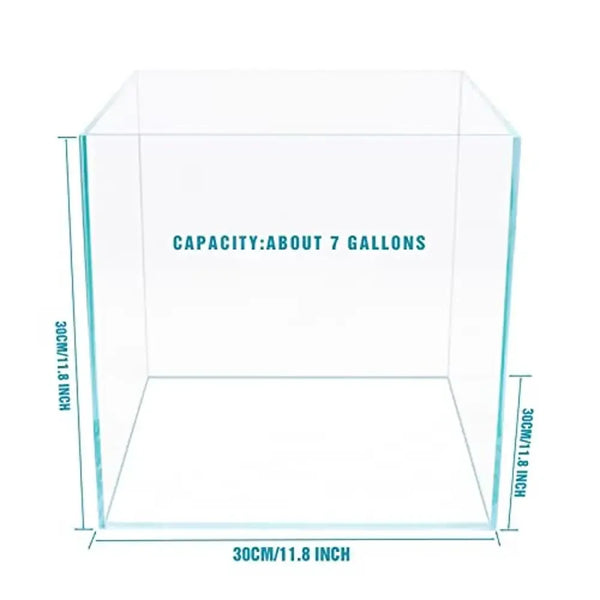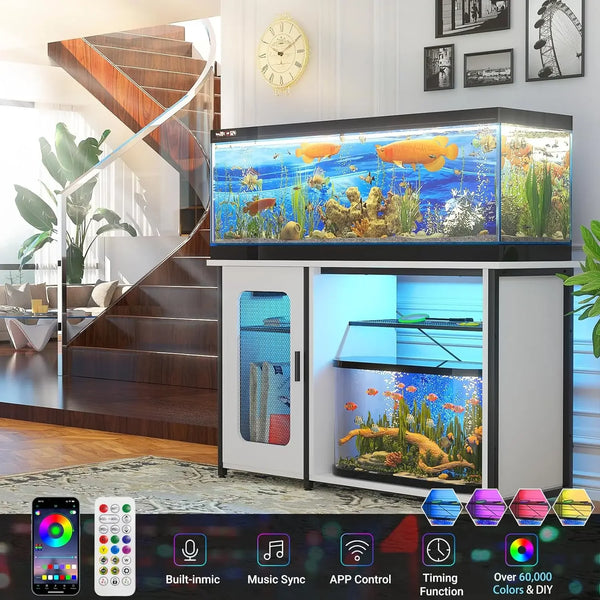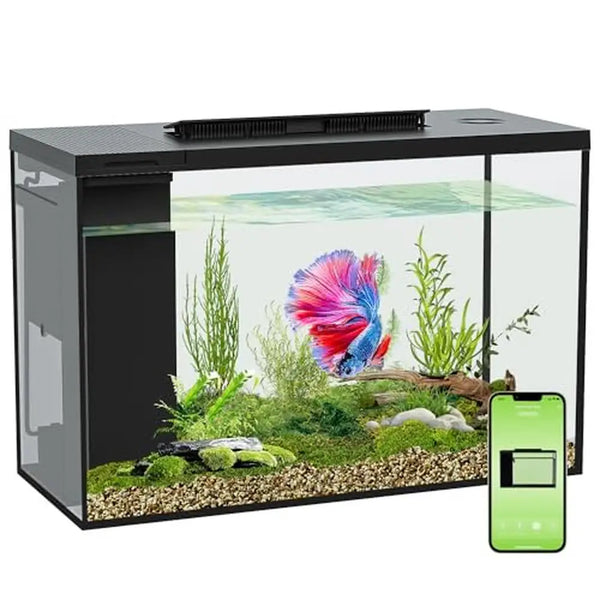Introduction

In the aquascaping community, enthusiasts are constantly seeking new ways to harmonize beauty and practicality. A rising trend is the **Drifting Bottle Ecological Aquatic Grass Tank**. This fascinating concept fuses natural aquatic ecosystems with artistic design, creating a captivating underwater landscape. Whether you're a veteran aquarist or a newcomer eager for a creative project, a drifting bottle tank offers a sustainable and easy-to-manage method for showcasing aquatic plants and small organisms.
In this article, we will thoroughly examine everything you need to know about setting up, maintaining, and enjoying a drifting bottle ecological aquatic grass tank.
What Is a Drifting Bottle Ecological Aquatic Grass Tank?

A drifting bottle tank is a fascinating self-contained ecosystem that exists within a transparent, floating bottle. It typically contains aquatic grasses, mosses, or other plants that do well in low-light environments, along with microorganisms or small aquatic creatures. These tanks aim to replicate natural ecosystems, highlighting sustainability and minimal interference.
Key elements include:
- A floating or suspended bottle that serves as the main container.
- Aquatic grasses and plants that are chosen for their durability and ability to thrive in nutrient-poor conditions.
- A balanced ecosystem that features microorganisms or small invertebrates for effective waste recycling.
Why Consider a Drifting Bottle Aquatic Grass Tank?

- Visual Appeal: The floating design offers a distinctive and elegant aesthetic for any home or office setting.
- Low Upkeep: After initial setup, these tanks generally require minimal maintenance because of their self-sustaining nature.
- Eco-Conscious: They foster sustainability by simulating natural aquatic cycles.
- Learning Opportunity: They provide an engaging way to learn about ecosystems and biodiversity.
How to Build Your Own Drifting Bottle Tank?

Step 1: Selecting the Right Bottle
Start by choosing a clear, sturdy bottle with a wide enough opening to accommodate plants and substrate. Some good options are:
- Glass wine bottles
- Acrylic or glass cylinders
- Transparent jars with lids
Pro Tip: Select UV-resistant glass or acrylic to help prevent algae growth from sunlight exposure.
Step 2: Preparing the Substrate
The substrate is crucial for plant growth. For drifting bottles, lightweight substrates like aqua soil or fine gravel work best.
- Aqua soil: Supplies essential nutrients for plant roots.
- Fine gravel or sand: Helps anchor aquatic grass while keeping the water clear.
Step 3: Adding Plants
Pick hardy aquatic plants that do well in small spaces and need little light. Some popular choices are:
- Java Moss (Taxiphyllum barbieri): Great for oxygenation and looks good too.
- Dwarf Hairgrass (Eleocharis parvula): Creates a lovely grassy carpet effect.
- Anubias Nana Petite: Ideal for adding greenery to the substrate or the walls of the bottle.
Gently place the plants into the substrate using tweezers to avoid disturbing them too much.
Step 4: Introducing Microorganisms or Fauna
Small aquatic creatures can help keep the ecological balance by recycling waste. Consider adding:
- Amano Shrimp: Fantastic for controlling algae.
- Nerite Snails: Keep the surfaces of the bottle clean.
- Daphnia or Cyclops: Offer natural filtration and boost biodiversity.
Step 5: Filling the Bottle
Gradually fill the bottle with dechlorinated water to prevent disturbing the substrate. A syringe or small funnel can assist with this process.
Step 6: Sealing or Floating the Bottle
- For floating designs, make sure the bottle is airtight and can float without sinking.
- Alternatively, you can suspend the bottle using clear fishing line or acrylic stands to create a floating effect.
Creating an Ideal Environment

Lighting
It's important to have moderate, indirect lighting. A nearby window or a small LED grow light can be effective. Be cautious, as too much light may lead to algae growth.
Temperature
Aim to keep the temperature stable, ideally between 72°F and 78°F (22°C - 25°C).
Water Parameters
- pH: A range of 6.5-7.5 is best for most aquatic plants and small organisms.
- Ammonia/Nitrite Levels: These should always be at zero. Using regular water testing kits can be very helpful.
Maintenance Tips

- Water Changes: Conduct small, regular water changes every 2-3 weeks to keep the water clean.
- Pruning Plants: Cut back any overgrown aquatic grass and moss to maintain a tidy look.
- Cleaning the Bottle: Lightly clean the inner surface to stop algae from accumulating.
- Monitoring Ecosystem Health: Look out for indicators of problems, like cloudy water or algae growth.
Creative Design Ideas

- Layered Substrate Design: Employ contrasting substrates to form beautiful patterns or gradients.
- Miniature Landscapes: Add driftwood or small stones to create a lifelike aquascape.
- Themed Tanks: Play around with themes such as "underwater forest" or "mossy meadow" for added creativity.
Common Challenges and How to Tackle Them

- Algae Overgrowth: Limit light exposure and introduce algae-eating creatures.
- Stunted Plant Growth: Look for nutrient shortages and modify lighting conditions.
- Cloudy Water: Boost water changes or add filter feeders such as daphnia.
The Benefits of Drifting Bottle Tanks for Beginners
Drifting bottle tanks differ from conventional aquariums in that they are small, cost-effective, and user-friendly for those just starting out. They enable beginners to try their hand at aquascaping without the intricacies that come with larger setups.
Conclusion
The drifting bottle ecological aquatic grass tank is a creative way to combine art, nature, and sustainability. It's adaptable for all skill levels, offering an enjoyable and fulfilling experience. By following the steps provided, you can craft your own miniature aquatic masterpiece, adding a touch of nature to your home.
If you're eager to begin, check out our extensive range of aquascaping tools, substrates, and plants at (https://plantedpro.com). Your adventure into the captivating world of drifting bottle tanks is just around the corner!
FAQs
- Can I use fish in my drifting bottle tank?
Small fish like bettas are possible but require careful monitoring of oxygen and space.
- What is the lifespan of a drifting bottle ecosystem?
With proper maintenance, these setups can last for years.
- How do I prevent leaks in the bottle?
Use waterproof silicone to seal any openings.
Let your creativity flow and join the growing community of aquascaping enthusiasts exploring this eco-friendly trend!

![Green Mountain - Microlandscape [Including Internal Plants + Decoration]](http://plantedpro.com/cdn/shop/articles/GridArt_20241117_202046513.jpg?crop=center&height=90&v=1754909977&width=90)
![Tree of Life - Moss Microlandscape [Including Internal Plants + Decoration]](http://plantedpro.com/cdn/shop/articles/GridArt_20241126_204335678_b9b6dcaf-b05b-460c-a060-3d5cc0230c3f.jpg?crop=center&height=90&v=1754908888&width=90)








































![Pavilions Moss Microecological Landscape [Including Internal Plants + Decoration]](http://plantedpro.com/cdn/shop/files/Pavilion_Moss_Planted_Pro.png?crop=center&height=600&v=1745762480&width=600)
![Tree of Life - Moss Microlandscape [Including Internal Plants + Decoration]](http://plantedpro.com/cdn/shop/files/11_900x_e50e9d85-02a0-4773-944e-d2cd82674841.jpg?crop=center&height=600&v=1730216177&width=600)
![Green Hills - Moss Microlandscape [Including Internal Plants + Decoration]](http://plantedpro.com/cdn/shop/files/20240910013738_1080x_2859d709-be4d-4f60-a2ff-198aafae9f77.jpg?crop=center&height=600&v=1730215869&width=600)
Leave a Comment